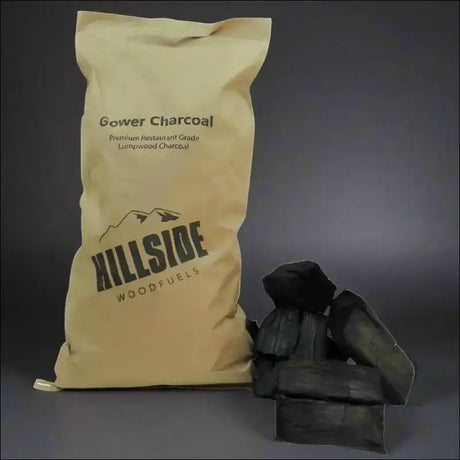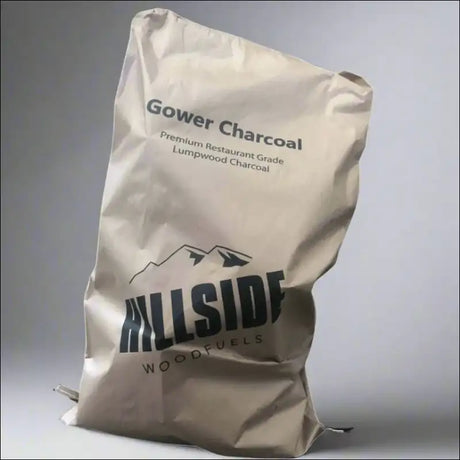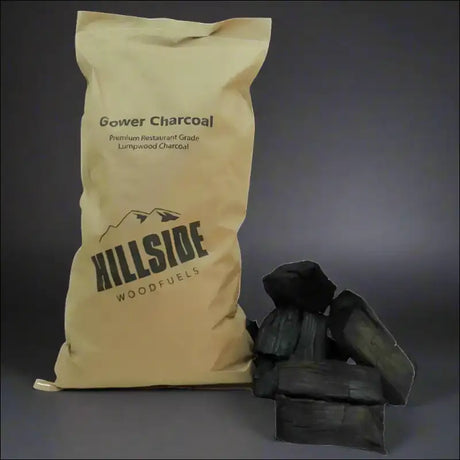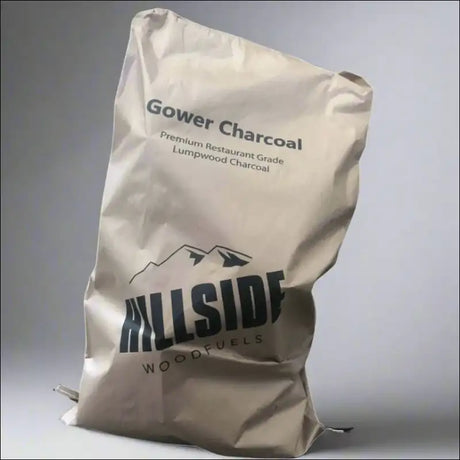Charcoal grilling is a time-honored tradition that brings out unique flavors and textures in food. Whether you're a seasoned pitmaster or a weekend grill enthusiast, understanding the differences between direct and indirect grilling methods is essential for mastering the art of charcoal cooking. This article delves into the nuances of both techniques, offering insights and tips on how to leverage each for creating mouthwatering dishes. From setting up your grill to troubleshooting common issues, we'll guide you through the process to ensure your next barbecue is a sizzling success.
Key Takeaways
- Direct grilling involves cooking food directly over the heat source for quick searing and char, while indirect grilling uses the surrounding heat for a slower cook.
- Choosing the right type of charcoal and understanding how to set up your grill are foundational skills for successful charcoal grilling.
- Direct grilling is best for foods that require high heat and a short cooking time, whereas indirect grilling is ideal for dishes that benefit from slow cooking.
- Combining direct and indirect grilling techniques can provide versatility and enhance the flavor profile of a wide range of recipes.
- Common grilling challenges such as flare-ups, temperature control, and weather variations can be mitigated with proper techniques and preparation.
The Basics of Charcoal Grilling
Understanding Direct vs. Indirect Grilling
When we gather around the grill, it's essential to know whether to use direct or indirect grilling methods. Direct grilling involves cooking food directly over the heat source, perfect for items that cook quickly. In contrast, indirect grilling means placing the food next to, not directly above, the heat, which is ideal for slow-cooking dishes.
Charcoal selection plays a pivotal role in grilling. Restaurant grade charcoal is high-quality, efficient, and suitable for any charcoal grill. It burns hotter, produces less ash, and works well for grilling and smoking various foods.
To achieve the best results, we must understand the strengths of each method. Direct grilling excels at searing and locking in flavors, while indirect grilling is the master of tender, evenly cooked meals.
Here's a quick comparison to help us decide which method to use:
- Direct Grilling: Best for steaks, burgers, and vegetables.
- Indirect Grilling: Ideal for whole chickens, roasts, and ribs.
Remember, the choice between direct and indirect grilling will influence the texture and flavor of our meal, so let's choose wisely!
Choosing the Right Charcoal
When we talk about charcoal grilling, the type of charcoal we choose is pivotal to the flavor and success of our cookout. Lump charcoal burns hot and fast, making it ideal for searing steaks or grilling burgers. On the other hand, briquettes offer a more consistent burn, which is perfect for extended cooking periods.
Hardwood charcoal is another option that imparts a distinct smoky flavor to the food, enhancing the overall grilling experience. Here's a quick comparison to help us decide:
- Lump Charcoal: Best for high heat and quick cooking.
- Briquettes: Suited for even, long-lasting heat.
- Hardwood Charcoal: Adds a unique smoky flavor.
Remember, the quality of charcoal can affect both the heat level and the taste of our grilled dishes. It's worth investing in a good quality product to ensure the best results.
Ultimately, the choice of charcoal will depend on the specific needs of our meal. Whether we're aiming for a quick sear or a slow roast, selecting the right charcoal is the first step towards grilling perfection.
Setting Up Your Grill for Success
Once we've chosen our preferred charcoal and understand the differences between direct and indirect grilling, it's time to set up our grill for success. Proper setup is crucial; it can make the difference between an average meal and a memorable feast. We'll start by cleaning the grill grates thoroughly to ensure there's no residue from previous cookouts. This not only prevents unwanted flavors but also reduces the risk of flare-ups.
To achieve the best results, we must pay attention to the arrangement of the charcoal. For direct grilling, we'll spread the coals evenly to create a uniform heat zone. For indirect grilling, we'll place the coals on one side of the grill, leaving the other side coal-free, which will act as our cooler zone.
Here's a simple checklist to ensure we're on the right track:
- Clean and oil the grill grates
- Arrange the charcoal according to the cooking method
- Preheat the grill to the desired temperature
- Have all cooking tools and ingredients ready
Remember, patience is a virtue when it comes to grilling. Allowing the grill to reach the right temperature before starting to cook is essential. This is where a good thermometer comes in handy, helping us to monitor and maintain the perfect cooking environment for our delicious barbecue.
Mastering Direct Grilling
The Art of High-Heat Cooking
When we dive into the realm of direct grilling, we're engaging with the art of high-heat cooking. This method is all about the immediate transfer of heat from the charcoal to the food, creating that irresistible crust and smoky flavor. The key is to manage the heat to avoid charring while still achieving a perfect sear.
Temperature control is crucial, and here's a simple guide to help us maintain the right heat levels:
- High Heat: 450-550 degrees F - Ideal for steaks and burgers
- Medium Heat: 350-450 degrees F - Great for chicken and vegetables
- Low Heat: 250-350 degrees F - Best for fish and delicate items
Remember, the goal is to cook the food thoroughly and quickly, locking in juices and creating a delicious caramelized surface.
By mastering high-heat cooking, we can ensure our grilled dishes are not just cooked, but are culinary masterpieces. It's not just about the flame, but about harnessing its power to elevate our food.
Best Foods for Direct Grilling
When we talk about direct grilling, we're referring to the method of cooking food directly over the hot coals. This technique is perfect for foods that cook quickly and can benefit from the high heat and the sear that only direct flames can provide. Steaks, burgers, and hot dogs are classic favorites that thrive under these conditions, developing a delicious crust that's packed with flavor.
Vegetables also shine when grilled directly, especially when they're cut into pieces that won't fall through the grill grate. Think bell peppers, onions, and zucchini, which can be turned into a vibrant, charred medley. For seafood lovers, nothing beats the taste of shrimp or a firm fish like salmon grilled over an open flame.
Remember, the key to successful direct grilling is to keep a close eye on your food. It's a high-heat, high-attention method that rewards the vigilant griller with mouth-watering results.
Here's a quick list of some of the best foods for direct grilling:
- Steaks
- Burgers
- Hot dogs
- Chicken breasts
- Shrimp
- Firm fish (e.g., salmon, tuna)
- Sliced vegetables (e.g., bell peppers, onions, zucchini)
Each of these foods has the potential to stand up to the heat and come off the grill with an irresistible char and flavor.
Tips for Perfect Searing
Achieving the perfect sear on your meats and vegetables is a hallmark of expert grilling. We've discovered that the key lies in the preparation and the heat. Ensure your grill is hot enough before placing your food on the grate. A high temperature is crucial for creating that delicious, caramelized crust.
To facilitate this, we recommend using a chimney starter for an even and efficient ignition of your charcoal. Once your coals are glowing red and covered with a fine ash, spread them evenly for a consistent cooking surface. Here's a simple checklist to follow:
- Preheat the grill for at least 15 minutes.
- Pat your food dry to avoid steaming.
- Oil the food, not the grates.
- Don't overcrowd the grill; give each piece space.
Remember, patience is a virtue when it comes to searing. Resist the temptation to flip the food too soon; give it time to develop that sought-after crust.
Lastly, consider your charcoal choice. We've been particularly impressed with premium hardwood charcoal selection for grilling, offering unrivaled flavor with kiln-dried ash. It's the Pitmaster's choice for consistent burn, high heat, and eco-friendliness. Enhance your BBQ experience with the natural wood essence.
Exploring Indirect Grilling
Low and Slow: The Key to Indirect Cooking
When we embrace the indirect grilling method, we're committing to the 'low and slow' philosophy. This approach is all about patience and precision, allowing heat to circulate around the food, cooking it evenly and gently. The beauty of indirect grilling lies in its ability to tenderize tougher cuts of meat, transforming them into succulent masterpieces.
Temperature control is crucial in indirect grilling. We maintain a consistent low heat by strategically placing the charcoal to one side of the grill or in a ring around the perimeter, leaving a space without coals directly under the food. Here's a simple guide to help you set up:
- Place the charcoal on one side of the grill for smaller grills.
- For larger grills, create a charcoal ring around the edge.
- Position a drip pan in the center, beneath the grilling area.
- Use a grill thermometer to monitor the temperature.
By mastering indirect grilling, we unlock a whole new realm of flavors and textures. It's the perfect method for foods that require a gentle touch and a longer cooking time, such as roasts, whole poultry, and smoked dishes.
Ideal Dishes for Indirect Grilling
When we talk about indirect grilling, we're referring to a method that allows for gentle cooking, making it perfect for dishes that require a longer cooking time. Whole poultry, roasts, and ribs stand out as prime candidates for this technique, as the indirect heat envelops the food, cooking it evenly and keeping it juicy.
Brisket and pork shoulder also benefit greatly from indirect grilling, where the low and slow approach breaks down the connective tissues, resulting in tender, fall-off-the-bone meat. Here's a quick list of dishes that are ideal for indirect grilling:
- Whole chicken or turkey
- Beef or pork ribs
- Pork shoulder or Boston butt
- Whole brisket
- Large fish fillets or whole fish
- Vegetables and fruits for roasting
By using indirect heat, we can also infuse our dishes with a smoky flavor that's hard to replicate with other cooking methods. This is especially true for foods that absorb smoke well, like cheese and nuts.
Remember, the key to successful indirect grilling is patience and maintaining a consistent temperature. It's a game of time and low heat, which rewards us with incredibly flavorful and tender dishes.
Managing Temperature and Smoke
We've learned that maintaining the right temperature and smoke levels is crucial for indirect grilling. Controlling the heat is not just about the amount of charcoal; it's about understanding airflow. Keep the vents on your grill open to a degree that maintains a steady temperature. If the grill gets too hot, close them slightly to reduce oxygen and lower the heat.
To infuse your dishes with that sought-after smoky flavor, consider using wood chips or chunks. Different woods impart different flavors, so experiment to find your favorites. Here's a simple guide to get you started:
- Hickory: Strong, bacon-like flavor. Great for pork and ribs.
- Apple: Mild and sweet. Ideal for chicken and seafood.
- Mesquite: Intense and earthy. Best for beef and game.
Remember, it's not just about the heat; it's about the balance of heat and smoke. Too much smoke can overpower your food, so monitor and adjust as needed. And don't forget to add a personal touch with spice blends. Our Global BBQ Spice Blend Shakers Set and Thai Street Food BBQ Spice Blend can elevate your barbecue to new heights, creating a crust and deep flavors that are simply irresistible.
Combining Direct and Indirect Techniques
Hybrid Grilling for Versatility
When we embrace hybrid grilling, we unlock a world of culinary possibilities. Hybrid grilling is the ultimate technique for those who want to master the art of charcoal grilling. By combining direct and indirect methods, we can start with a perfect sear over high heat and then transition to a gentler, slower cook to achieve the ideal internal temperature without overcooking the exterior.
Versatility is the name of the game when it comes to hybrid grilling. Here's a quick guide to the process:
- Start your food over direct heat to get that desirable crust.
- Move it to the indirect heat zone to finish cooking through.
- Use the lid to control the overall temperature and to add a smoky flavor if desired.
Remember, the key to hybrid grilling is managing the transition between high and low temperatures. It's not just about the time spent on each side, but also about the timing and control of the heat.
This method is particularly effective for larger cuts of meat that require a longer cooking time to reach the perfect doneness. By mastering hybrid grilling, we ensure that every meal off the grill is cooked to perfection, with a delicious char on the outside and a juicy, tender inside.
Transitioning Between Methods
As we delve into the world of charcoal grilling, we often find ourselves needing to switch from direct to indirect grilling methods, or vice versa, within a single cooking session. This transition can be seamless if we plan ahead and understand the timing involved. We must be mindful of the heat zones we create within our grill to make this shift effectively.
Timing is crucial when transitioning between grilling methods. Here's a simple step-by-step guide to help you manage the process:
- Start by establishing a strong direct heat zone for searing or cooking at high temperatures.
- Once you've achieved the desired sear, move the food to a cooler part of the grill to finish cooking via indirect heat.
- Adjust the vents to regulate airflow and control the temperature during the transition.
Remember, the goal is to maintain consistent cooking temperatures throughout the grilling process to ensure your food is cooked to perfection.
It's also important to consider the type of grill you're using. Some grills, like the versatile Kamado grills, which are often featured on sale on various websites, make transitioning between methods particularly easy due to their superior heat retention and control. However, no matter the grill, with a little practice, we'll be flipping between grilling techniques like pros.
Recipes That Benefit from Both Techniques
We've explored the distinct advantages of both direct and indirect grilling, but some of the most flavorful dishes emerge from a combination of these methods. Roast chicken, for instance, benefits from an initial sear over direct heat to crisp the skin, followed by a slower cook over indirect heat to ensure juicy, perfectly cooked meat.
Hybrid grilling isn't just about the order of cooking; it's about understanding how different foods react to heat. Here's a list of recipes that showcase the harmony of direct and indirect grilling:
- Beer Can Chicken: Start with a direct grill to set the flavor, then switch to indirect to cook through.
- Reverse-Seared Steak: Indirectly cook to the desired doneness, then sear over direct heat for a perfect crust.
- Smoked Ribs: Smoke over indirect heat for tenderness, then finish over direct heat for a caramelized glaze.
By mastering the transition between grilling methods, you can unlock a new realm of culinary possibilities. The key is to remain vigilant and responsive to the needs of your dish, ensuring that each component is cooked to perfection.
Troubleshooting Common Grilling Challenges
Avoiding Flare-Ups and Burnt Food
We've all experienced the disappointment of charred steaks or singed vegetables when what we wanted was a perfectly seared meal. Flare-ups are a common challenge, but with a few precautions, we can prevent them and ensure our food is grilled to perfection. One key is to maintain a clean grill; buildup of grease and food particles can ignite unexpectedly. It's also essential to manage the fat content of our foods, as excessive drippings are a primary cause of flare-ups.
To control flare-ups, we can use a two-zone fire setup, where one side of the grill is hot and the other is cooler. This allows us to move food away from the flames when necessary. Here's a simple list to follow:
- Keep the grill clean to minimize fuel for flare-ups.
- Trim excess fat from meats to reduce drippings.
- Use a two-zone fire to manage heat.
- Have a spray bottle of water handy to douse any unexpected flames.
Remember, controlling flare-ups is not just about salvaging a meal; it's about safety and enjoying the grilling experience to the fullest.
Lastly, consider using 100% natural, sustainable firelighters for a superior BBQ experience. These ethically sourced firelighters are easy to use, odorless, and safe, enhancing flavor without unwanted tastes or smells.
Controlling Grill Temperature
We've all experienced the frustration of a grill that's too hot or too cold. Controlling the temperature of your charcoal grill is crucial for cooking your food to perfection. The type of charcoal you use can make a significant difference. For instance, premium charcoal provides a more consistent heat, which is essential for maintaining the right temperature.
To manage the heat effectively, start by arranging the coals properly. Here's a simple guide:
- High Heat: Coals are spread evenly across the grill.
- Medium Heat: Coals are spread in a thinner layer or concentrated in the center.
- Low Heat: Coals are pushed to one side, creating a cooler zone.
Remember, the lid of your grill is your best friend when it comes to temperature control. Keeping the lid on will help stabilize the temperature, while opening it will allow you to cool down the grill if it gets too hot.
Adjusting the air vents is another key step. Open vents mean more oxygen, which increases the heat. Conversely, closing the vents will reduce the temperature. Keep a close eye on your grill's thermometer and make adjustments as needed to keep the heat steady.
Dealing with Weather Variations
We all know that the weather can be a fickle friend when it comes to outdoor grilling. Sudden changes in weather can significantly affect the heat of your grill and, consequently, the outcome of your food. To combat this, we've developed a few strategies to help maintain a consistent grilling environment, no matter what Mother Nature throws our way.
Adjusting the vents is crucial in regulating the grill's temperature. When it's windy, for example, you may need to close the vents slightly to prevent the grill from getting too hot. Conversely, on colder days, opening the vents can help increase the temperature inside the grill. Here's a quick guide to help you adjust:
- Windy Conditions: Close vents halfway to maintain temperature
- Cold Weather: Open vents to allow more air and increase heat
- Rain: Keep the lid closed as much as possible to retain heat
Remember, the key to successful grilling is maintaining control over the temperature. This becomes even more important when the weather is unpredictable.
By keeping a close eye on the thermometer and making small adjustments as needed, we can ensure that our grilled dishes are cooked to perfection, regardless of the weather. It's all about embracing the challenge and using it to our advantage.
Conclusion: The Best Grilling Technique Depends on Your Needs
In the fiery debate between direct and indirect grilling methods, it's clear that both techniques have their unique advantages and ideal applications. Direct grilling shines when it comes to searing steaks, burgers, and vegetables, offering a quick and high-heat approach that imparts a delicious char and grill marks. On the other hand, indirect grilling is the champion of slow-cooked, tender dishes like whole chickens, roasts, and ribs, where the gentle, even heat allows for flavors to develop fully without the risk of burning. Ultimately, the choice between direct and indirect grilling doesn't hinge on a definitive winner but rather on what you're aiming to cook. By understanding the strengths of each method, you can master the art of charcoal grilling and ensure that every meal is cooked to perfection. Whether you're a seasoned grill master or a weekend warrior, embracing both methods will expand your culinary repertoire and impress your guests with your grilling prowess.
Frequently Asked Questions
What is the main difference between direct and indirect grilling?
Direct grilling involves cooking food directly over the heat source for quick searing and grilling, while indirect grilling uses the surrounding heat to cook food more slowly and evenly, often with the grill lid closed.
How do I choose the best charcoal for grilling?
The best charcoal for grilling depends on your cooking style. Lump charcoal burns hotter and quicker, ideal for direct grilling, whereas briquettes provide a more consistent and longer-lasting heat suitable for indirect grilling.
What are the best foods to grill using the direct method?
Foods that are best for direct grilling include steaks, burgers, hot dogs, vegetables, and any items that benefit from high heat and a quick cook time to achieve a seared exterior and flavorful crust.
Can I use both direct and indirect grilling methods in one cooking session?
Yes, many grillers use a hybrid approach, starting with the direct method for searing and then moving food to an indirect heat zone to finish cooking, which is especially beneficial for thicker cuts of meat.
How can I prevent flare-ups and food from burning on the grill?
To prevent flare-ups, trim excess fat from meats, keep the grill clean, and have a spray bottle of water handy to douse any flames. Also, use indirect grilling methods for fatty foods to reduce direct exposure to flames.
What should I do if my grill temperature is too high or too low?
If your grill temperature is too high, open the lid to let some heat out, adjust the vents to reduce airflow, or move the food to a cooler part of the grill. If it's too low, add more charcoal, adjust the vents to increase airflow, or move the food closer to the heat source.







